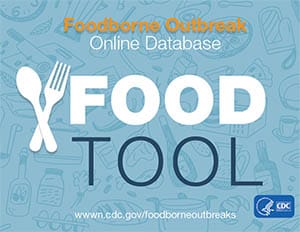
CDC is making it easier to search data on foodborne disease outbreaks. A redesigned online tool lets you search nearly 20 years of outbreak data by state, food, or germ.
The Foodborne Outbreak Online Database Tool (FOOD Tool) now includes:
The tool lets you search foodborne disease data by year, state, location of food preparation, food and ingredient, and cause. It provides information on numbers of illnesses, hospitalizations, deaths, the germ, and whether the cause was confirmed or suspected.
“During an outbreak, public health investigators can use the database to help point them towards possible food sources by searching foods implicated in past outbreaks,” said Barbara Mahon, MD, MPH, deputy branch chief of CDC’s Enteric Diseases Epidemiology Branch. “And they can find information on which germs caused outbreaks.”
The database contains all foodborne disease outbreaks reported to CDC. However, not all outbreaks are reported. An FAQ provides guidance on using the data and limitations to keep in mind when searching by food or ingredient.
FOOD Tool’s data come from CDC’s Foodborne Disease Outbreak Surveillance System, which captures information on foodborne outbreaks caused by enteric bacterial, viral, parasitic, and chemical agents reported by state, local, and territorial public health agencies.
CDC analyzes these data to understand the impact of foodborne outbreaks and the causes, foods, settings, and contributing factors (for example, food kept at room temperature for too long).
Access the updated FOOD Tool at wwwn.cdc.gov/foodborneoutbreaks.
IUFoST Scientific Information Bulletin (SIB)
FOOD FRAUD PREVENTION